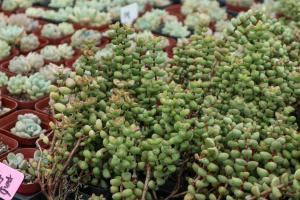When to Plant Beans and Corn in Pots
Planting vegetables in pots can be a great way to enjoy fresh produce even if you don't have a lot of outdoor space to work with. Beans and corn are two popular vegetables that can be grown successfully in pots, but timing is key when it comes to planting. In this article, we'll take a closer look at when to plant beans and corn in pots to get the best results possible.
Planting Beans in Pots
Beans are a warm-season crop that require both warmth and plenty of sunlight to thrive. In most regions, it's best to wait until the last frost has passed before planting beans in pots. This will usually happen sometime in late spring or early summer. If you're not sure when the last frost typically occurs in your region, you can check with your local gardening center or use an online resource to find out.
When planting beans in pots, make sure to choose a container that's at least 12 inches deep and wide. Beans prefer well-draining soil that's slightly acidic, with a pH between 6.0 and 6.5. You can either use potting soil or create your own mix by combining equal parts of peat moss, compost, and perlite. Make sure to keep the soil consistently moist, but not waterlogged.
Beans generally take about 50 to 60 days to mature, so you can expect to start harvesting your crop sometime in mid to late summer. Once the beans have reached their full size and color, simply snap them off the plant and enjoy!
Planting Corn in Pots
Corn is another warm-season crop that needs plenty of heat and sunlight to grow properly. However, unlike beans, corn plants can grow quite tall--often reaching up to 6 feet or more! Because of this, it's important to choose a container that's both wide and deep enough to accommodate the plant's roots and allow it to grow to its full height.
When planting corn in pots, it's best to wait until the soil has warmed up to at least 60°F. This usually happens sometime in late spring or early summer, depending on your region. Corn also prefers well-draining soil that's slightly acidic, with a pH of 6.0 to 6.5.
Because of their size, corn plants also need plenty of space in order to grow properly. It's recommended that you plant no more than two corn plants per container, and choose a container that's at least 18 inches wide and deep. Make sure to keep the soil consistently moist, but not waterlogged, and fertilize every two to three weeks with a balanced fertilizer.
Corn takes about 60 to 100 days to mature, depending on the variety. Once the silks on the ears turn brown and dry out, the corn is ready to harvest. Simply pull back the husk and check the kernels for plumpness and flavor before enjoying your fresh, homegrown corn.
Conclusion
Planting beans and corn in pots can be a fun and rewarding project for gardeners of all skill levels. Just remember to choose containers that are big enough to accommodate the size of the plants, and to keep the soil consistently moist and well-draining. With a little bit of patience and care, you'll be enjoying fresh, homegrown vegetables in no time!

 how many times do yo...
how many times do yo... how many planted tre...
how many planted tre... how many pine trees ...
how many pine trees ... how many pecan trees...
how many pecan trees... how many plants comp...
how many plants comp... how many plants can ...
how many plants can ... how many plants and ...
how many plants and ... how many pepper plan...
how many pepper plan...
































